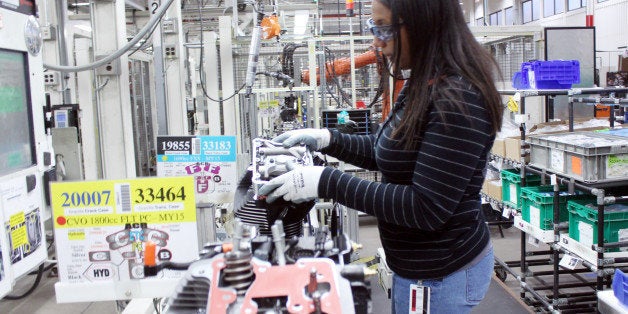
Without question the future of U.S. manufacturing hinges on our ability to attract a new generation of bright young people into manufacturing careers. According to a recent study by Deloitte and the Manufacturing Institute, given current trends, over the next 10 years we are facing a shortage of 2 million manufacturing workers. That is a worrisome challenge that poses a real and present threat to the health of our vital manufacturing sector.
Jennifer McNelly, President of the Manufacturing Institute, calls this report frightening. "You cannot build a workforce overnight," she said to me in a recent interview. "The tenth graders today are not getting the education, training and skills they will need to assume responsible positions in modern manufacturing."
If manufacturers sit around waiting for government to recognize this problem and devise a workable remedy, the problem will not be corrected. President Obama has championed manufacturing and launched some promising initiatives, but Congress has a knee-jerk reaction against most of what he proposes and supports. The private sector must provide the leadership to close the skills gap. Based on my conversations with McNelly, I think we can get ahead of the curve by focusing on the Three P's: Perception, Pipelines and Partnerships.
- Perception is the biggest challenge -- many people think of manufacturing as a grimy scene of dirt and chaos. Manufacturers across the country are bringing young people onto their shop floors so they can see what modern manufacturing is really like. Last October on National Manufacturing Day 365,000 students took the tour. We need more of this.
- Pipelines -- refers to creating steady streams of qualified people to work in modern manufacturing and a coordinated system to match people with requisite skills to appropriate job openings. "The market mechanism for people seeking careers in manufacturing is broken," McNelly said. "Typical human resources practices do not align with the skills needs of manufacturers. There are many people out there who have trained to work in manufacturing and are highly qualified, but cannot find jobs. We have to deal with this critical gap."
- Partnerships -- will entail local government agencies, public schools and community colleges working with local businesses to determine what skills are needed in that region and adjusting their curricula to meet that need. "Education and industry sometimes speak a different language," McNelly said. "We are trying to close that gap. We need industry-driven technical training in public schools and community colleges."
McNelly is doing a great job and has an inspired vision for the future. She and the National Association of Manufacturers (NAM) have also created an important partnership with EverFI, the high tech skills training company, to advance the 3 P's to close the skills gap. I urge everyone with an interest in closing the skills gap to work with both of these groups and the partnership created by the NAM.
_________________
Jerry Jasinowski, an economist and author, served as President of the National Association of Manufacturers for 14 years and later The Manufacturing Institute. Jerry is available for speaking engagements. April 2015

